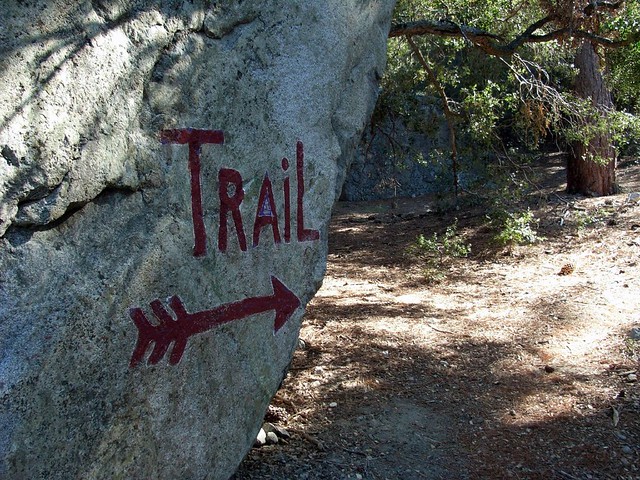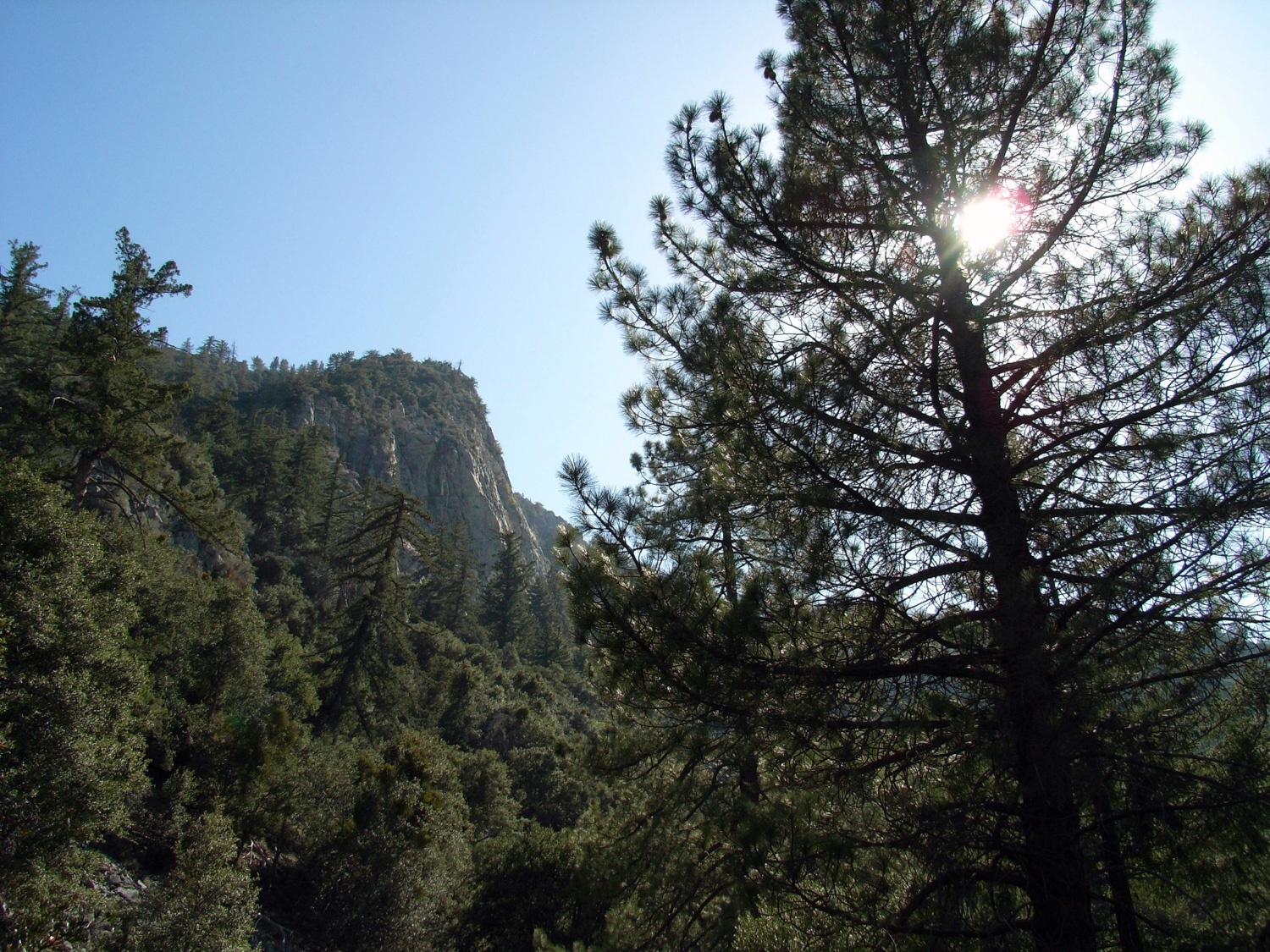The most challenging peak in the front range of the San Gabriels. This trail loops through a shaded canyon, brush, and exposed rock-face Class Three bouldering before descending to idyllic meadows in the shadow of Strawberry Peak’s dramatic north face. Hands down, one of the best hikes in Los Angeles.
NOTE: THIS TRAIL WAS HEAVILY DAMAGED IN THE STATION FIRE. As of November, 2015, hikers have reported both the Colby Canyon Trail and Mountaineer’s Route are in passable shape. Although conditions are improving, be aware of poodle-dog bush and poison oak on the Colby Canyon Trail and note that some of the scrambling directions on the Mountaineer’s Route are tough to spot.
An easier way to reach Strawberry Peak is by hiking from the saddles of neighboring Mount Lawlor or a longer trek from Josephine Peak.
Strawberry Peak was one of the first hikes I did in the San Gabriels that reminded me that hiking is more than just strolling in the woods. It starts out with a swiftly ascending canyon trail, moves to an unmaintained, thorn-lined use-trail, and tops off with some straight-up class 3 rock climbing. It is, as they say, a doozy. But it’s also a lot of fun, and one of the few peaks close to the city that feels like a real-life mountain climb.
As I parked at the busy trailhead, I could see the deceptively rounded summit peeking out from behind two shorter hills. I laced up, stretched out, and headed up. When I did this hike, there was also apparently a Search and Rescue mission going on. This is one of those trails that doesn’t seem like it can be dangerous … until it is. If you’re planning on taking the mountaineers route / scramble to the top, you should know what you’re getting into before you do it.


The trail at Colby Canyon starts out by dropping a bit from the road to the canyon floor. It’s heavily forested and you should enjoy it … because this is pretty much it for the shade on this trail.
This early section also had a small seasonal creek. When I hiked this in October there was nothing but dust in the riverbed. Today, it was full of croaking frogs and the occasional bathing bird.


In this lower section of Colby Canyon there is a lot of poison oak – especially near the seasonal stream. Just watch where your arms and legs are going and you should be fine. This area was badly burned in the 2009 Station Fire but appears to be making a strong recovery. After a short distance, the trail climbs the east wall of the canyon and leaves most of the vegetation behind it. From here, you’ll get your first views of the south face of Strawberry Peak.



At about the 2 mile mark you’ll come upon Josephine Saddle, where the trail splits toward Josephine Peak to the west and Strawberry Peak to the north at a water tank that may have some interesting graffiti. If you’re looking for the more fun mountaineer’s route to Strawberry Peak, walk north toward the Strawberry Peak Trail but keep your eye peeled for a short use-trail on the east side of the path very close to the Saddle. Make a quick scramble up to the ridge and walk about 0.2 miles to what looks like the end of the trail at a rugged rock face.


I remember the first time I got to this part of the trail and thought about going back and taking the long way around. If you’re not used to rock scrambling – or in a feisty mood – this can get intimidating very quickly. But it’s really not as tough as it looks. A kind vandal was nice enough to mark a suggested path up the rocks which – while technically graffiti – is actually pretty helpful when you don’t know where you’re supposed to be going.



… and the knowledge that you’ve got a tougher climb ahead of you.
The trail makes a steep but steady climb until you reach the 2.9 mile mark. You’ll meander through giant boulders, dive under chaparral, and avoid Spanish bayonets along the way.


And eventually, you’ll hop over a large pile of broken rocks and come face to face with this:



When you’re finished hanging out at the summit, either return back the way you came or continue down a steep, rugged trail that runs along one of the eastern ridges of Strawberry Peak. It’s not nearly as adventurous as the western ascent nor are there any fun climbing spots … but the trail is fairly easy to follow and only runs into Bayonet gauntlets a few times along the way.

In a mile you’ll reach the bottom of the eastern trail, where you can tack on a scramble up Lawlor or head back to Red Box for a car shuttle. Instead, turn north on the Strawberry Trail to start the long loop around the north side of the peak you just bagged. Enjoy the shaded, slightly declining trail as it loops north and west, passing a seasonal spring at the 5.2 mile mark.




From the Meadows, it’s about a mile and a half back to Josephine Saddle. Head back to the trailhead the way you came in.

Tags: Angeles National Forest, Climbing, Hiking, Los Angeles, Strawberry Meadows, Strawberry Peak, Trail Write-Ups






























